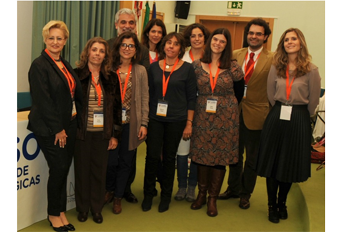Associação Portuguesa de Investigação em Cancro
Thyroid cancer secondary to radiotherapy: Relevance of follow-up protocols in young cancer survivors
Thyroid cancer secondary to radiotherapy: Relevance of follow-up protocols in young cancer survivors

The causal relation between external beam radiation and thyroid cancer is well known. However, there are few studies enlightening the real evolution of thyroid parenchyma changes along the years. The authors report 10 cases of childhood cancer survivors whose thyroid was direct or indirectly involved in the irradiation field. They have been followed since they finished their cancer treatments, taking into account their increased risk of thyroid nodes development and, subsequently, thyroid cancer. There are lacking adequate protocols to monitor patients in these conditions. The authors propose a long-term follow-up protocol for these patients, regarding this increased risk.
Authors and Affiliations:
Joana Simões-Pereira, Margarida Silva Vieira, M. Conceição Pereira
Serviço de Endocrinologia do Instituto Português de Oncologia de Lisboa, Francisco Gentil.
Abstract:
Background: Radiotherapy increases the risk of thyroid cancer (TC); patients submitted to this treatment should undergo a long-term follow-up. Our aim is to describe the features and outcomes of young patients who developed TC after radiotherapy.
Methods: At our center, patients undergoing radiotherapy directly or indirectly involving the thyroid are regularly followed up in order to detect early dysfunction or nodules. Herein, we report the cases of 10 patients who were submitted to radiotherapy and developed TC.
Clinical Findings: Seven patients were irradiated in the neck and 3 in nearby regions. The mean age at the last radiotherapy session was 10 ± 5.5 years. The average time until the appearance of the first thyroid nodule was 14 ± 4.7 years. The mean size increment of the nodules was 2.4 ± 1.6 mm/year. On the first cytology, only 2 results were suspicious of papillary thyroid cancer (PTC). All patients presented histology of PTC. Eight were in stage I and 2 in stage II. The median follow-up from primary diagnosis to TC and beyond was 20 and 3 years, respectively.
Conclusions: In these patients, cytologies may be difficult to interpret due to persistent benign results. The threshold for surgical indication may be anticipated, considering the increased risk of TC. We report the evolution of these nodules over time, from the end of primary oncological treatment.
Journal: Case Reports in Oncology






